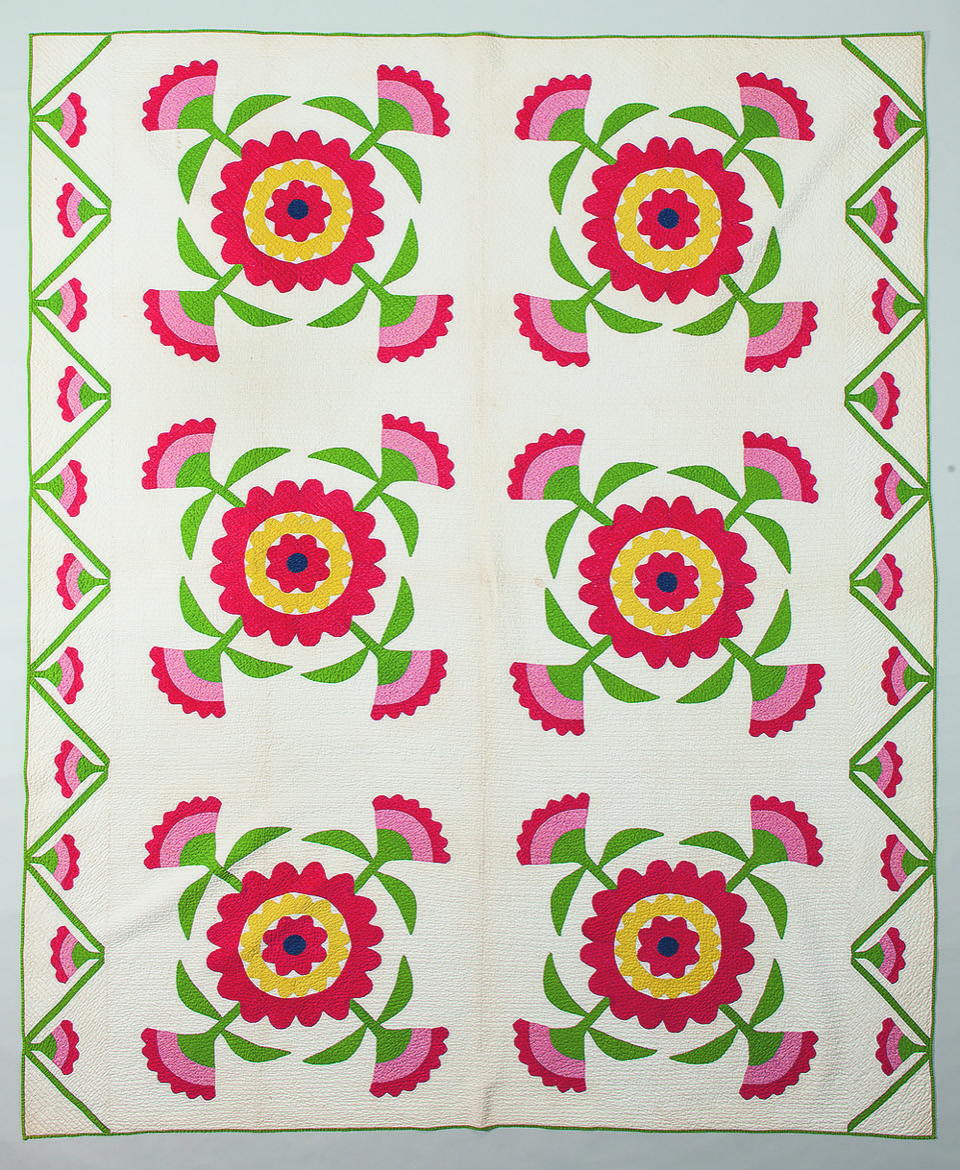

Cotton appliqué quilt (photo courtesy of Museum of Early Southern Decorative Arts)
Have you ever wondered how textile scholars date a quilt? Even when the maker is unknown and thus no hints are available from her birth and death dates, often clues are readily seen. Certain techniques, patterns and even color schemes were more common at one time period than others.
For instance, the cotton quilt shown here is a good example of a quilt made during the second half of the 19th century. Rather than a pieced quilt, which was made by many pieces cut to shape and then stitched together in a pattern, this quilt is an appliqué quilt. Its colored fabrics are cut to a pattern and then stitched – or appliquéd – on top of a white background.
The use of predominantly red and green with white as the background was popular locally from about 1850 until c. 1890. The red color was a vegetable dye from madder root. It was known as Turkey red and, unlike some early vegetable dyes, it was especially colorfast. One can see that its red color is just as strong today as it was when Sara Brumley of Greene County, Tennessee, made it at mid-19th century, probably with her mother’s help.
Appliqué quilts went out of fashion by the turn of the century. They experienced a revival in popularity during the second quarter of the 20th century, but this time with pastel colors.
This quilt is from the textile collection of the Museum of Early Southern Decorative Arts and may be seen in “Tennessee Fancy: Decorative Arts of Northeast Tennessee, 1780-1940,” now on view at William King Museum of Art, Abingdon, Virginia.
The exhibition is supported by the Massengill-DeFriece Foundation with additional support from The Bank of Tennessee and The Rea Charitable Trust.
WKMA is open Monday through Saturday 10 a.m. to 5 p.m. and Sunday 1-5 p.m. Free admission. Social distancing and masks required.
This is the fourth in a new series of articles on Tennessee arts and antiques by Betsy K. White, director of William King Museum of Art, Abingdon, Virginia. She is the author of two books on the history of the region’s decorative arts and material culture: “Great Road Style: The Decorative Arts Legacy of Southwest Virginia & Northeast Tennessee” and “Backcountry Makers: An Artisan History of Southwest Virginia and Northeast Tennessee.”